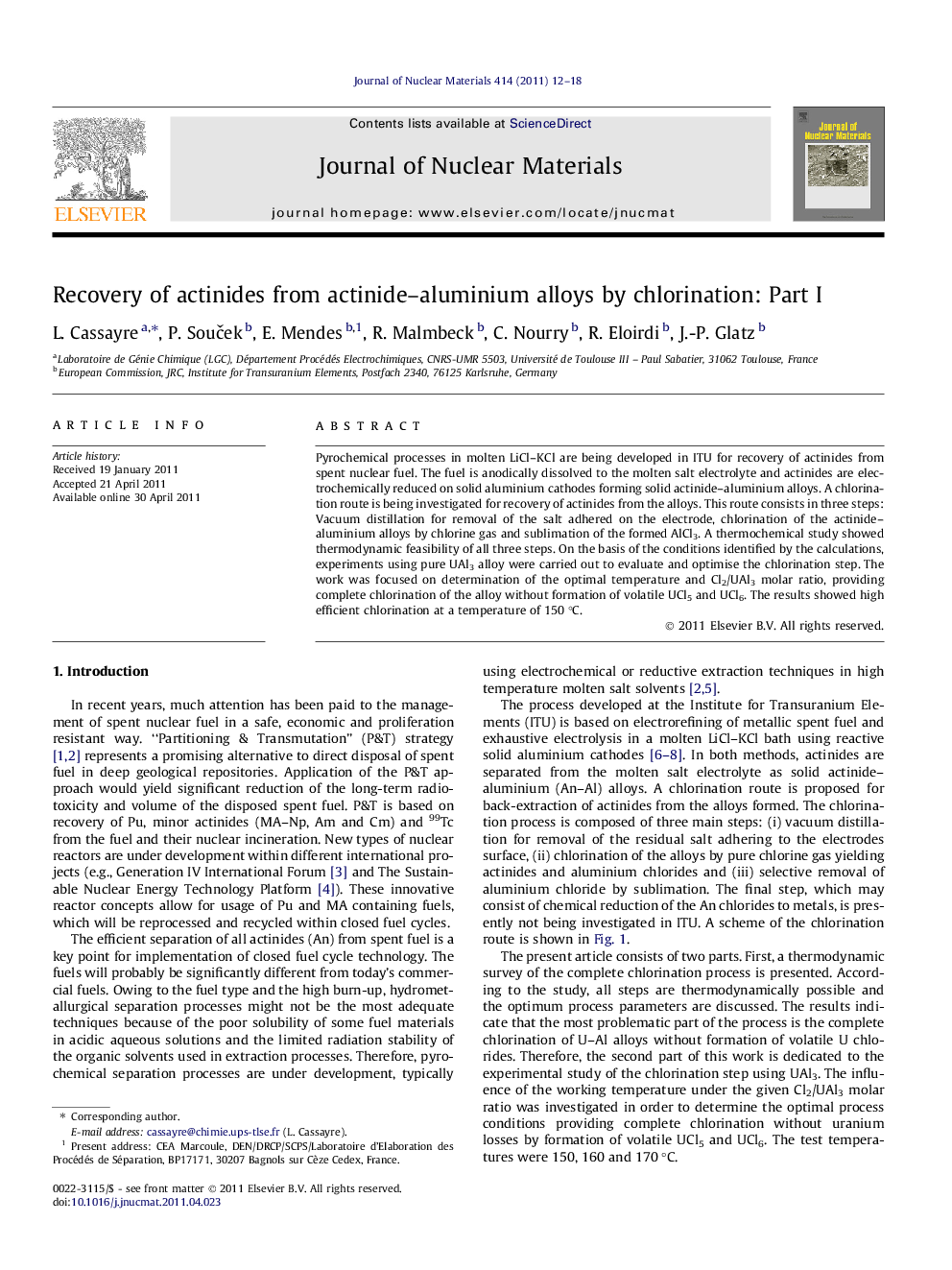| Article ID | Journal | Published Year | Pages | File Type |
|---|---|---|---|---|
| 1566913 | Journal of Nuclear Materials | 2011 | 7 Pages |
Pyrochemical processes in molten LiCl–KCl are being developed in ITU for recovery of actinides from spent nuclear fuel. The fuel is anodically dissolved to the molten salt electrolyte and actinides are electrochemically reduced on solid aluminium cathodes forming solid actinide–aluminium alloys. A chlorination route is being investigated for recovery of actinides from the alloys. This route consists in three steps: Vacuum distillation for removal of the salt adhered on the electrode, chlorination of the actinide–aluminium alloys by chlorine gas and sublimation of the formed AlCl3. A thermochemical study showed thermodynamic feasibility of all three steps. On the basis of the conditions identified by the calculations, experiments using pure UAl3 alloy were carried out to evaluate and optimise the chlorination step. The work was focused on determination of the optimal temperature and Cl2/UAl3 molar ratio, providing complete chlorination of the alloy without formation of volatile UCl5 and UCl6. The results showed high efficient chlorination at a temperature of 150 °C.
